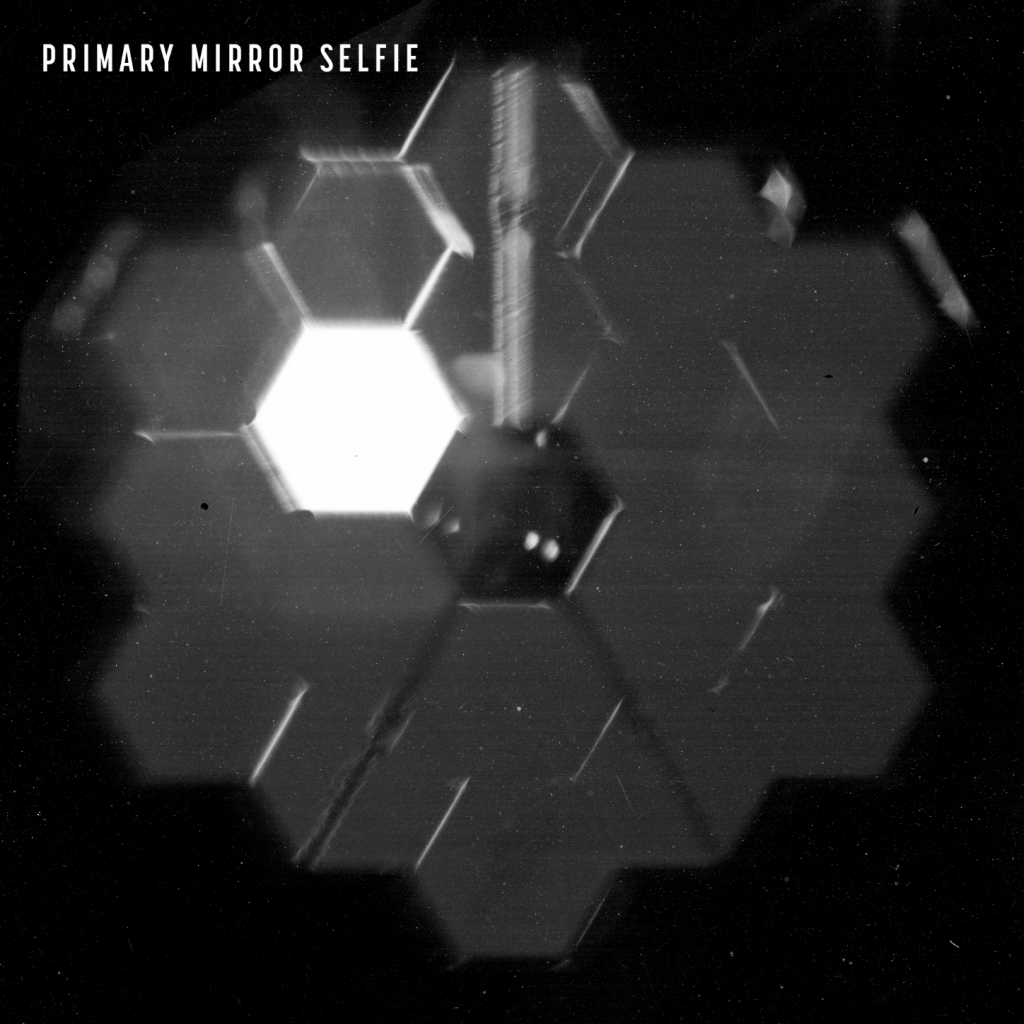James Webb Telescope Takes World’s Most Expensive Selfie
One million miles away from Earth, Webb sent back its first calibration photos.

This “selfie” was created using a specialized pupil imaging lens inside of the NIRCam instrument that was designed to take images of the primary mirror segments instead of images of space. [Photo: NASA]
The James Webb Space Telescope sent its first two images back to Earth—a single star and a kind of outer-space selfie.
Friday morning, NASA released the two images as part of the telescope’s calibration process. The black-and-white photo serves as a selfie of Webb’s primary mirrors. In its reflection, the secondary mirror is visible in the center segment. Since Webb’s decades-long development racked up a bill of $10 billion, the telescope surely holds the unofficial title for the world’s most expensive selfie taken.
The first may look like a sky full of stars, but is actually 18 slightly different perspectives on a single star. Given that Webb’s gigantic primary mirrors are just starting to align themselves, each of the 18 segments act as a single telescope.
In a graphic released by NASA, the Webb team was able to identify which point in the initial alignment mosaic was being seen by each mirror. Eventually, NASA will be able to compile each point into a single, higher-definition image.
The photos were taken by Webb’s Near Infrared Camera (NIRCam) as a means of aligning the primary mirrors. The image capturing process started on February 2, where Webb searched through 156 different positions in order to locate the targeted star.
“This initial search covered an area about the size of the full Moon because the segment dots could potentially have been that spread out on the sky,” said Marshall Perrin, deputy telescope scientist for Webb and astronomer at the Space Telescope Science Institute.
“Taking so much data right on the first day required all of Webb’s science operations and data processing systems here on Earth working smoothly with the observatory in space right from the start. And we found light from all 18 segments very near the center early in that search! This is a great starting point for mirror alignment.”
According to NASA, Webb generated 1,560 images using NIRCam’s 10 detectors—totaling in 54 gigabytes of data, taking nearly 25 hours to process.
“The entire Webb team is ecstatic at how well the first steps of taking images and aligning the telescope are proceeding. We were so happy to see that light makes its way into NIRCam,” said Marcia Rieke, principal investigator for the NIRCam instrument and regents professor of astronomy, University of Arizona.
Once Webb has completed its cooldown to minus-390 degrees and is fully calibrated, the telescope will send back images with a higher quality than that of its predecessor, the Hubble Space Telescope.
NASA noted that NIRCam is able to operate at current temperatures, but the rest of the major components will have to continue cooling before they start operations.
“Launching Webb to space was of course an exciting event, but for scientists and optical engineers, this is a pinnacle moment, when light from a star is successfully making its way through the system down onto a detector,” said Michael McElwain, Webb observatory project scientist, NASA’s Goddard Space Flight Center.
According to NASA, the first scientific images are expected to be sent back this summer.

Sign-up for newsletters & special offers!
Get the latest FLYING stories & special offers delivered directly to your inbox






